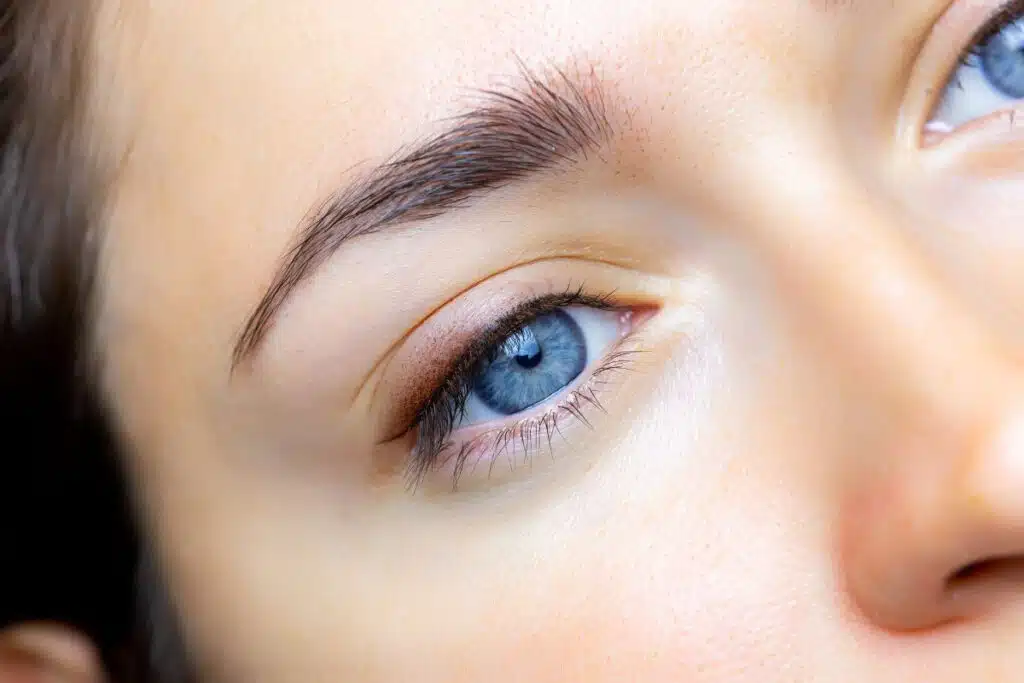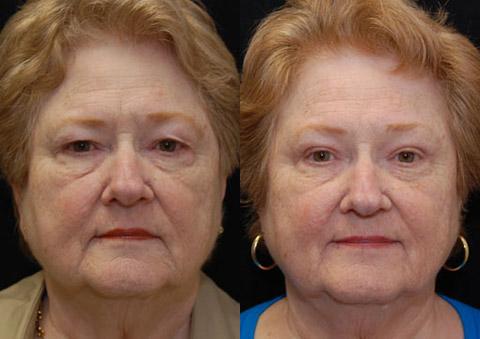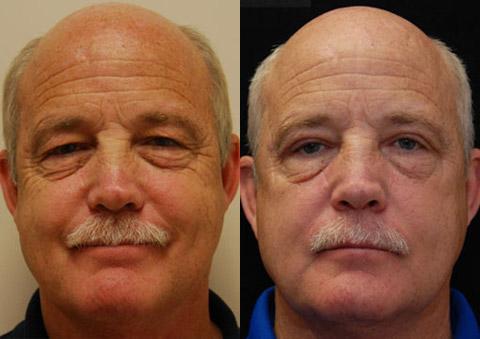Have you ever wondered what happens after an eyelid lift? Many patients are excited about the transformation a blepharoplasty procedure can bring, but they’re also curious about what the recovery process looks like—especially when it comes to blepharoplasty stitches and healing from the blepharoplasty incisions.
An upper eyelid surgery can rejuvenate your appearance, but knowing what to expect during recovery is just as important as the results. From how long stitches stay in to what steps you can take for smoother healing, this guide will answer your questions and prepare you for a successful journey after eyelid lift surgery.

How Long Do Stitches Stay in After Eyelid Surgery?
Stitches from a blepharoplasty procedure are typically removed within 5 to 7 days, depending on the patient’s healing progress and the type of sutures used. Some stitches are dissolvable and fade on their own, while others need to be removed by your surgeon. Your provider will evaluate your healing and decide the right time for removal, ensuring optimal recovery and minimal scarring.
Types of Blepharoplasty Stitches
When it comes to eyelid surgery, the types of sutures used can influence both the recovery timeline and the final results. Broadly, there are two main categories: absorbable (also called dissolvable stitches) and non-absorbable sutures. Each has its own advantages, and your surgeon will select the one that best matches your procedure and healing needs.
Absorbable sutures are designed to break down naturally over time and are often used when a patient prefers to avoid a separate stitch removal appointment. These dissolvable stitches gradually disappear as the body heals, which can be more convenient and comfortable. They are commonly chosen for delicate areas where minimal follow-up is desired.
Non-absorbable sutures, on the other hand, remain in place until they are manually removed by the surgeon, usually within the first week. While this does require a follow-up visit, they can provide more control over wound closure and may be preferred in certain cases to ensure precise healing of the blepharoplasty incisions. Your surgeon’s experience and your specific eyelid anatomy will determine which option is most appropriate for your eyelid lift.
The Blepharoplasty Stitch Removal Process
The process of suture removal after blepharoplasty is generally straightforward and performed during a short follow-up appointment. Non-absorbable stitches are carefully taken out, usually within 5 to 7 days, to allow the eyelid tissues to continue healing naturally. This step is quick and typically causes minimal discomfort.
Your surgeon will evaluate your healing progress during this visit, ensuring that the incision lines are closing properly and no complications are present. Proper timing and technique during suture removal help minimize scarring and contribute to smooth, natural-looking results after your eyelid lift.
Complications to Worry About During Recovery
While blepharoplasty is generally safe, it’s important to understand potential complications that may arise during recovery. Knowing what is normal and when to seek the guidance of your doctor can make a big difference in ensuring a safe healing process. Below are some of the most common concerns patients should be aware of after eyelid surgery.
Persistent Dry Eyes
Some patients may experience persistent dry eyes following blepharoplasty, as the surgery can temporarily affect tear production or eyelid closure. This usually improves as healing progresses, but in the meantime, lubricating eye drops or ointments prescribed by your doctor can provide relief. If dryness persists or worsens, it’s important to seek medical guidance to avoid further irritation or complications.
Signs of Infection
Infections after eyelid surgery are rare but should be taken seriously if they occur. Warning signs include increasing redness, swelling, warmth around the incision, or discharge from the stitches. If you notice any of these changes, contact your doctor right away. Prompt evaluation and treatment can prevent the infection from worsening and help protect your surgical results.
Persistent Pain and Discomfort
Mild soreness is common after eyelid surgery, but persistent pain and discomfort that does not improve may signal a problem. While over-the-counter medications or prescriptions from your doctor can help manage typical post-operative discomfort, severe or worsening pain should not be ignored. Contact your surgeon promptly if you experience unusual levels of pain, as early intervention ensures your recovery stays on track.

Tips for a Smooth Healing Process after Blepharoplasty
Following the right guidelines during recovery can make a major difference in both comfort and your cosmetic outcome. Small steps taken in the days after surgery can help reduce swelling, minimize risks, and speed healing. Below are practical tips to support a safe and successful recovery after your blepharoplasty.
Use Cold Compresses
Applying cold compresses in the first 48 hours after surgery can significantly reduce swelling and discomfort around the eyes. Short, gentle applications help constrict blood vessels, minimizing bruising while promoting a calmer healing environment. Be sure to follow your doctor’s instructions on how often and how long to apply compresses for the best results.
Stay Hydrated and Eat Well
Proper hydration and nutrition are essential for a smooth recovery after eyelid surgery. Drinking plenty of water supports circulation and helps the body eliminate toxins, while a balanced diet rich in vitamins and protein provides the nutrients needed for tissue repair. By keeping your body fueled and hydrated, you create an ideal environment for your incisions to heal efficiently and for overall well-being during the recovery period.
Avoid Strenuous Activities
It’s important to avoid strenuous activities such as heavy lifting, bending over, or vigorous exercise during the initial healing period. These movements can increase blood pressure in the delicate eye area, leading to swelling or even opening of the incision lines. Most patients are advised to rest and resume normal activities gradually, following their surgeon’s specific recommendations.
Keep the Area Clean
Caring for the delicate eyelid skin is essential to avoid irritation and support proper healing. Gently cleanse around the incision sites with the recommended solution or sterile wipes, taking care not to rub or tug at the stitches. During this period, it’s also important to avoid eye makeup, as it can introduce bacteria and slow the healing process. Keeping the area clean ensures your eyelids heal smoothly and reduces the risk of infection.
Wear Dark Sunglasses
Wearing dark sunglasses after surgery does more than protect your eyes from sunlight—it also shields the sensitive eyelid area from dust, wind, and accidental contact. During this period, vision may feel slightly strained, so it’s best to avoid contact lenses and instead wear glasses until cleared by your surgeon. Most patients are advised to take these precautions for about four weeks after surgery to ensure the incision sites heal properly and comfortably.
Follow Your Healthcare Provider’s Instructions
Your surgeon’s advice is tailored specifically to your surgical procedure, so following it closely is one of the most important steps you can take for recovery. This may include guidance on caring for your stitches, when to use eye drops, and how to gradually return to normal activities. Sticking to these instructions ensures that healing is safe, comfortable, and leads to the best cosmetic results possible.
Blepharoplasty Surgery Results


Each patient is unique and individual results may vary*.
Choosing the Right Plastic Surgeon
When it comes to blepharoplasty and other delicate facial surgeries, choosing an experienced surgeon makes all the difference. Precision in handling blepharoplasty incisions, understanding of eyelid anatomy, and careful stitch management are crucial to achieving natural-looking results while minimizing complications. A skilled specialist ensures both safety and artistry in every blepharoplasty procedure.
At Donath Facial Plastic Surgery, Dr. Alexander S. Donath has earned international recognition for his expertise in facial cosmetic surgery. Honored to present his techniques at global conferences and trusted to train other physicians, Dr. Donath has been consistently named a Top Doctor in Cincinnati and beyond. Patients from across the U.S. and abroad choose him for his artistry and proven results. Ready to refresh your eyes with confidence? Call us today at 513-891-5438 or visit our contact page to schedule your consultation.
